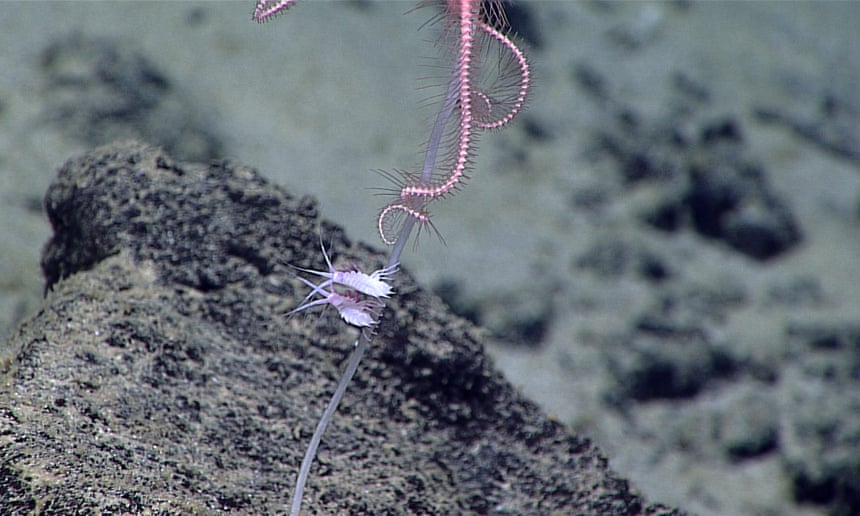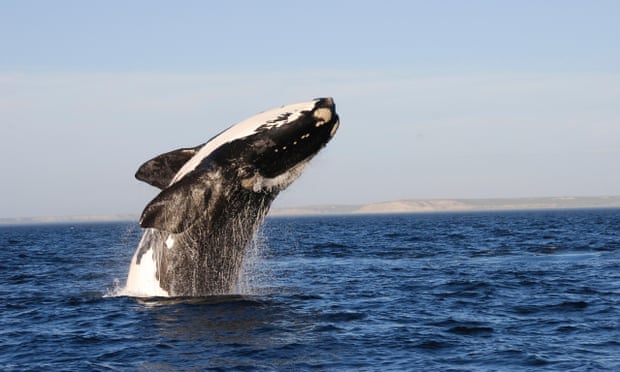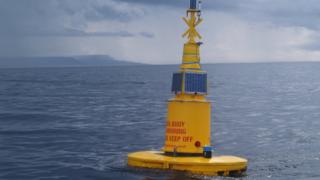Orca sightings are back in the forefront and they seem to be spotted most often when there have been Pacific White Sided Dolphins in the area. These sightings have not included any major chasing or hunting of the Dolphins this time though, but the Dolphins are not seen travelling with the Orca, so odds are that they are Transient Bigg's. Without confirmation, they are listed in the Unidentified category.
Humpback Whales appear to be staying in less populated areas but did show up by Salmon Point, below Campbell River and by Lund on the mainland side in this report. Their movements indicate there must be some good food around while they manage to keep their distance away from chatty Dolphins and Orca.
Susan MacKay, Wild Ocean Whale Society
Humpback Whales appear to be staying in less populated areas but did show up by Salmon Point, below Campbell River and by Lund on the mainland side in this report. Their movements indicate there must be some good food around while they manage to keep their distance away from chatty Dolphins and Orca.
Susan MacKay, Wild Ocean Whale Society
Two Pacific White Sided Dolphins swimming past the Powell River Viewpoint
Michelle Pennell, Powell River, BC
Society News & Events
Nominations:
Wild Ocean Whale Society has been nominated again this year in the Not-For-Profit category of the 2017 Annual Business Awards for going above and beyond in all aspects of business. Thank you all for the nomination. Winners will be announced at a gala event held by the Powell River Chamber of Commerce on February 4, 2017
Real Time Monitoring Station Update:
We hope to get a few photos of the progress in our next issue.
Our team of Volunteers continue to do a great job in making sure all your reports are mapped and published regularly. Would you like to join us?
Note to Safari browser users:
Apple software upgrades may prevent images from displaying on this site. To resolve the problem, please clear your Safari browser cache: On a Mac this is in Safari preferences. On iPad and iPhones, use the Settings app, Safari, Clear History and Website Data.
DONATE
to the non profit wild ocean whale society
Sightings Update
ISSUE SIGHTINGS MAP 2017-004
Jump to: Orca | Humpback Whales | PWS Dolphins
UNIDENTIFIED KILLER WHALES
Thu Feb 16 2017
09:37 • 8 Orca breaching, heading south in front of Powell River in the middle of Malaspina Strait. I haven't seen any really big dorsals yet.
Susan MacKay, Wild Ocean Whale Society
09:29 • 3 Orca hunting, east of Rebecca Rocks, Malaspina Strait. Observed through telescope.
Michelle Pennell, Powell River, BC
Wed Feb 15 2017
14:59 • est. 6 Orca heading south from Gillies Bay towards Dick Island, Georgia Strait. One juvenile in the group.
SIGHTING MEDIA
SIGHTING MEDIA
Micheline Macauley, Texada Island, BC
SIGHTING MEDIA
Unidentified Killer Whales
Six Killer Whales heading South from Gillies Bay towards Dick Island
Wed, 15 Feb 2017 - 2 items
Micheline Macauley, Texada Island, BC
SIGHTING MEDIA
Unidentified Killer Whales
Six Killer Whales heading South from Gillies Bay towards Dick Island
Wed, 15 Feb 2017 - 2 items
Micheline Macauley, Texada Island, BC
Mon Feb 13 2017
05:40 • 5 Orca breaching, heading north-west off Jericho Beach, Burrard Inlet. Seen from Jericho beach. They were right close to the freighters. Breaching and shallow diving - staying in the same area for at least 15 minutes. ▫ Observed from Shore
Melanie Barker, Vancouver, BC
Sun Feb 12 2017
15:28 • 4-6 Orca breaches, heading south-west off the south-west tip of Harwood Island, Malaspina Strait. Two breaches were observed.
14:43 • 5-7 Orca beyond Rebecca Rocks towards Vancouver Island, Georgia Strait. ▫ Observed from Shore
Susan MacKay, Wild Ocean Whale Society
Wed Feb 08 2017
11:49 • 3 Orca heading north across the strait from Grief Point closer to Texada Island, Malaspina Strait.
SIGHTING MEDIA
SIGHTING MEDIA
Michelle Pennell, Powell River, BC
SIGHTING MEDIA
Unidentified Killer Whales
Three Killer Whales heading North across Malaspina Strait from Grief Point
Wed, 8 Feb 2017 - 3 items
Michelle Pennell, Powell River, BC
SIGHTING MEDIA
Unidentified Killer Whales
Three Killer Whales heading North across Malaspina Strait from Grief Point
Wed, 8 Feb 2017 - 3 items
Michelle Pennell, Powell River, BC
10:46 • Orca heading north-west from Black (Albion) Point towards Myrtle Rocks, Malaspina Strait.
Lorna Rutledge, Powell River, BC
Tue Feb 07 2017
10:25 • 5-6 Orca foraging, heading east between Myrtle Rocks and Black (Albion) Point, Malaspina Strait. One male, 1-2 adult female, juveniles, and one young. Sea lions seen in the area a few minutes before the whales appeared. Whales in a tight group, circling, moving slowly. One sea lion noted close in to shore after whales had passed by. ▫ Observed from Shore
Liz Kennedy, Powell River, BC
10:23 • 5 Orca heading south by Myrtle Rocks, Malaspina Strait. In a tight group. One big bull.
Jim Southern, Powell River, BC
Sat Feb 04 2017
14:30 • est. 3 Orca moving slowly, heading north-west between Harwood Island and Mystery Reef, Malaspina Strait. ▫ Observed from Shore
Cheryl Rose, Powell River, BC
Thu Feb 02 2017
17:03 • 8-9 Orca heading south in front of Powell River Viewpoint, Malaspina Strait.
Susan MacKay, Wild Ocean Whale Society
16:34 • 2 Orca heading south across from Myrtle Rocks approaching Texada Island, Malaspina Strait.
Jim Southern, Powell River, BC
Jump to: Orca | Humpback Whales | PWS Dolphins
HUMPBACK WHALES
Sun Feb 12 2017
11:00 • 1 Humpback Whales off Salmon Point, Georgia Strait. Humpback passed by out in front of the Salmon Point Pub.
Emily Wilson,
Fri Feb 10 2017
14:55 • 2 Humpback Whales in front of Lund, Malaspina Strait. The whales dove in front of Lund.
Eric Green, Powell River CCG
Jump to: Orca | Humpback Whales | PWS Dolphins
PACIFIC WHITE SIDED DOLPHINS
Thu Feb 16 2017
13:47 • 20-25 PWS Dolphins foraging, across from Myrtle Rocks close to Texada Island, Malaspina Strait.
Jim Southern, Powell River, BC
Sat Feb 11 2017
15:14 • est. 200 PWS Dolphins heading south by the Powell River Viewpoint, Malaspina Strait. In groups of 50 approximately.
SIGHTING MEDIA
SIGHTING MEDIA
Michelle Pennell, Powell River, BC
SIGHTING MEDIA
Pacific White Sided Dolphins
Two hundred Pacific White Sided Dolphins heading South by the Powell River Viewpoint
Sat, 11 Feb 2017 - 3 items
Michelle Pennell, Powell River, BC
SIGHTING MEDIA
Pacific White Sided Dolphins
Two hundred Pacific White Sided Dolphins heading South by the Powell River Viewpoint
Sat, 11 Feb 2017 - 3 items
Michelle Pennell, Powell River, BC
14:32 • PWS Dolphins off Gibsons Beach north of Powell River, Malaspina Strait. ▫ Observed from Shore
Michelle Pennell, Powell River, BC
Tue Feb 07 2017
18:02 • PWS Dolphins heading south off Powell River, Malaspina Strait.
SIGHTING MEDIA
SIGHTING MEDIA
Michelle Pennell, Powell River, BC
SIGHTING MEDIA
Pacific White Sided Dolphins
Pacific White Sided Dolphins heading South off of Powell River
Tue, 7 Feb 2017 - 3 items
Michelle Pennell, Powell River, BC
SIGHTING MEDIA
Pacific White Sided Dolphins
Pacific White Sided Dolphins heading South off of Powell River
Tue, 7 Feb 2017 - 3 items
Michelle Pennell, Powell River, BC
NEW! WOWs Sightings Archive Explorer
Recommended for desktop browsers and newer mobile devices
Dive into over 5,000 Cetacean Sightings, images, videos and audio recordings reported in our Sightings Updates with the WOWS Sightings Archive Explorer
Archive Explorer takes readers into the Cetacean world of the BC Coast. Easily view all Cetacean sighting reports together with all sighting photos and videos:
• View species such as Humpback, Grey Whale or Dalls Porpoise
• Follow the endangered Southern Residents Orca in the Salish Sea
• Search for encounters with T002C2 Tumbo
• Goto Port Alberni to watch a close-up video of Orca in the harbour
• Track the T010s Transients as they hunt and travel the inside passage
• Check-Out "KC", the ever popular Humphack and track his whereabouts this past August
• Goto one of 12,000 named locations on the BC and WA State coast
• Print custom sighting reports and maps (Coming Soon)
Explore this powerfull new research tool with the Archive Explorer Help page
Note: The Cetacean Sightings Archive is also available in database format together with sighting photo and video links for viewing, query and download here
Send your Comments and Questions to: Archive Explorer Feedback
Dive into over 5,000 Cetacean Sightings, images, videos and audio recordings reported in our Sightings Updates with the WOWS Sightings Archive Explorer
Archive Explorer takes readers into the Cetacean world of the BC Coast. Easily view all Cetacean sighting reports together with all sighting photos and videos:
• View species such as Humpback, Grey Whale or Dalls Porpoise
• Follow the endangered Southern Residents Orca in the Salish Sea
• Search for encounters with T002C2 Tumbo
• Goto Port Alberni to watch a close-up video of Orca in the harbour
• Track the T010s Transients as they hunt and travel the inside passage
• Check-Out "KC", the ever popular Humphack and track his whereabouts this past August
• Goto one of 12,000 named locations on the BC and WA State coast
• Print custom sighting reports and maps (Coming Soon)
Explore this powerfull new research tool with the Archive Explorer Help page
Note: The Cetacean Sightings Archive is also available in database format together with sighting photo and video links for viewing, query and download here
Send your Comments and Questions to: Archive Explorer Feedback
The Magazine
REGIONAL & WEST COAST
CBC News
No, those aren't beached whales on Vancouver's shoreline.
A Vancouver man with a deep affection for orcas spent most of his weekend carefully crafting nearly life-sized killer whales out of snow and sand on Jericho Beach.
"With this sudden snowfall, I thought I'm going to do it right now, while I have the chance, and see how it turns out," said Aaron Cambrin, 27, who started the sculptures Friday.
The spy-hopping orca was first, which took about five hours, he said.
Vancouver Sun, BC
A guide is now available to help mariners avoid collisions and disturbance involving whales and other cetaceans in B.C. coastal waters.
Shipping is considered a leading threat to whales — not just from collisions, but general stress and the impact from engine noise, which can diminish the ability of at-risk killer whales to feed and communicate.
The new guide is produced by the Vancouver Aquarium’s Coastal Ocean Research Institute in partnership with the ports of Vancouver and Prince Rupert. Northern sightings recorded by Pacific Northwest LNG are also included.
Time-Colonist, BC
The proposed zone in Haro Strait is less than one-half of one per cent of the critical core habitat, West said, and runs from San Juan Island’s Cattle Point to Mitchell Point. “It works out to about 10 to 12 square miles. It extends three-quarters of a mile from the shore and then there’s an additional quarter-mile buffer zone.”
The idea of a protection zone in the area has been talked about for 15 years, said Michael Harris, former executive director of the Pacific Whale Watch Association, which represents 37 whale-watching companies in B.C. and Washington state. “It’s primarily going after whale-watch boats, commercial whale-watch boats.” But whale-watch boats are a “minuscule” part of the problem, Harris said.
“The biggest problem is recreational boaters, people who don’t do this commercially, don’t have experience operating around whales.”
He said commercial operators took a lead in establishing the government guidelines they must obey, which require boats to stay 200 yards from whales.
“It’s been a very progressive industry, largely because they know that without whales there is no whale watching.”
He said whale-watching companies realize there is a major focus on protecting whales. “The whale watchers want to show that they’re part of the solution, not part of the problem.” ...
Scientists have long used Argos satellite tags to track blue whales along the West Coast, learning how the largest animals on the planet find enough small krill to feed on to support their enormous size.
Now researchers from NOAA Fisheries, Oregon State University and the University of Maryland have combined that trove of tracking data with satellite observations of ocean conditions to develop the first system for predicting locations of blue whales off the West Coast. The system, called WhaleWatch, produces monthly maps of blue whale “hotspots” to alert ships where there may be an increased risk of encountering these endangered whales.
CANADA
Hakai Magazine, BC
Captain George Drevar and the crew of the sailing ship Pauline were off the coast of Brazil in 1875 when they witnessed a battle between two titans of the sea: a sperm whale and a monstrous sea serpent.
Over the span of 15 minutes, Drevar watched as the serpent coiled itself around the whale and attempted to pull it below the surface. Occasionally, the battle dipped out of sight, only to rise again. Eventually the serpent prevailed, and the whale was dragged to the dark depths “where no doubt it was gorged at the serpent’s leisure,” Drevar wrote in a statement.
From today’s scientific vantage, it’s difficult to imagine what Drevar saw—no known animal remotely fits the description. Yet Robert France, an ecologist at Dalhousie University in Halifax, Nova Scotia, thinks he can explain Drevar’s and other sailors’ sea monster tales. France suggests the incident was indeed a battle, but between a dying whale and the discarded fishing gear that was pulling it under....
INTERNATIONAL
Vice - Happy
Murdoch University researcher Krista Nicholson, who monitors dolphins occupying the Peel-Harvey coastal waters near Perth, said she has observed multiple cases of dolphins interacting with blowfish. She noted that juveniles in particular like to hold puffer fish in their mouths for a few hours then pass them around.
These blowfish have a lethal toxin called tetrodotoxin present in their skin, flesh and internal organs which is deadly to humans. For the dolphins though, it has a narcotic effect, placing them in a “trance-like state.”
University of St Andrews
In April 2010 a blowout on the drilling rig resulted in the release of 134 million gallons of oil into the Gulf of Mexico over an 87-day period, killing thousands of marine mammals including bottlenose dolphins.
A new study coordinated by the US National Oceanic and Atmospheric Administration (NOAA) documents the unprecedented mortality rate and long-term environmental impacts of the oil’s exposure and represents a synthesis of more than five years’ worth of data collection, analysis and interpretation.
CBS This Morning
In this latest installment of the “Climate Diaries” series, CBS News correspondent Mark Phillips is in Antarctica, following a group of researchers chasing killer whales. They are using new technology, including drones, to learn about the health of the ocean’s top predator. Phillips shows us how the Antarctic Ocean’s dwellers are experiencing the effects of climate change.
The ship that took a CBS News team to the U.S. research base at Palmer Station, Antarctica is not your average love boat. There’s some serious scientific work being done on this cruise, and the findings are not always happy ones, reports CBS News correspondent Mark Phillips.....
Earth Network
The vaquita is vanishing. Its population has fallen 92 percent since the late 1990s, leading scientists to warn it could be extinct by 2018. About 100 vaquitas existed in 2014, but that total was updated to just 60 in 2016. And in February 2017, scientists announced only about 30 vaquitas are left, suggesting extinction may be imminent.
At roughly 4 feet long and 90 pounds, vaquitas are already the planet's smallest marine mammals — vaquita means "little cow" in Spanish — and now they're also the most endangered ....
The Guardian, UK
Scientists have discovered “extraordinary” levels of toxic pollution in the most remote and inaccessible place on the planet – the 10km deep Mariana trench in the Pacific Ocean.
Small crustaceans that live in the pitch-black waters of the trench, captured by a robotic submarine, were contaminated with 50 times more toxic chemicals than crabs that survive in heavily polluted rivers in China.
“We still think of the deep ocean as being this remote and pristine realm, safe from human impact, but our research shows that, sadly, this could not be further from the truth,” said Alan Jamieson of Newcastle University in the UK, who led the research.
DONATE
to the non profit wild ocean whale society
















